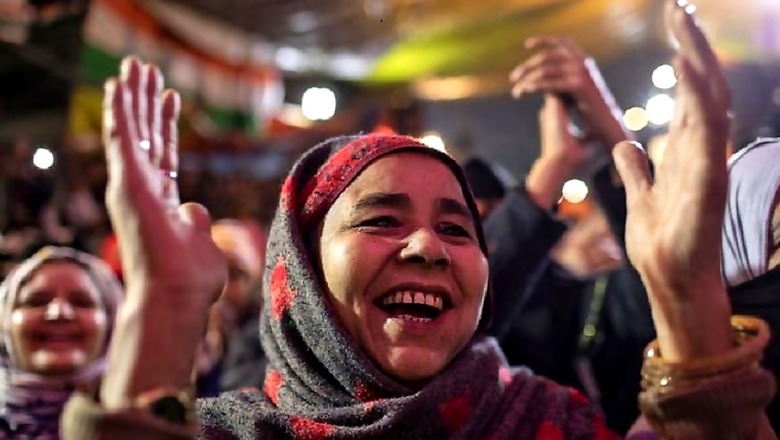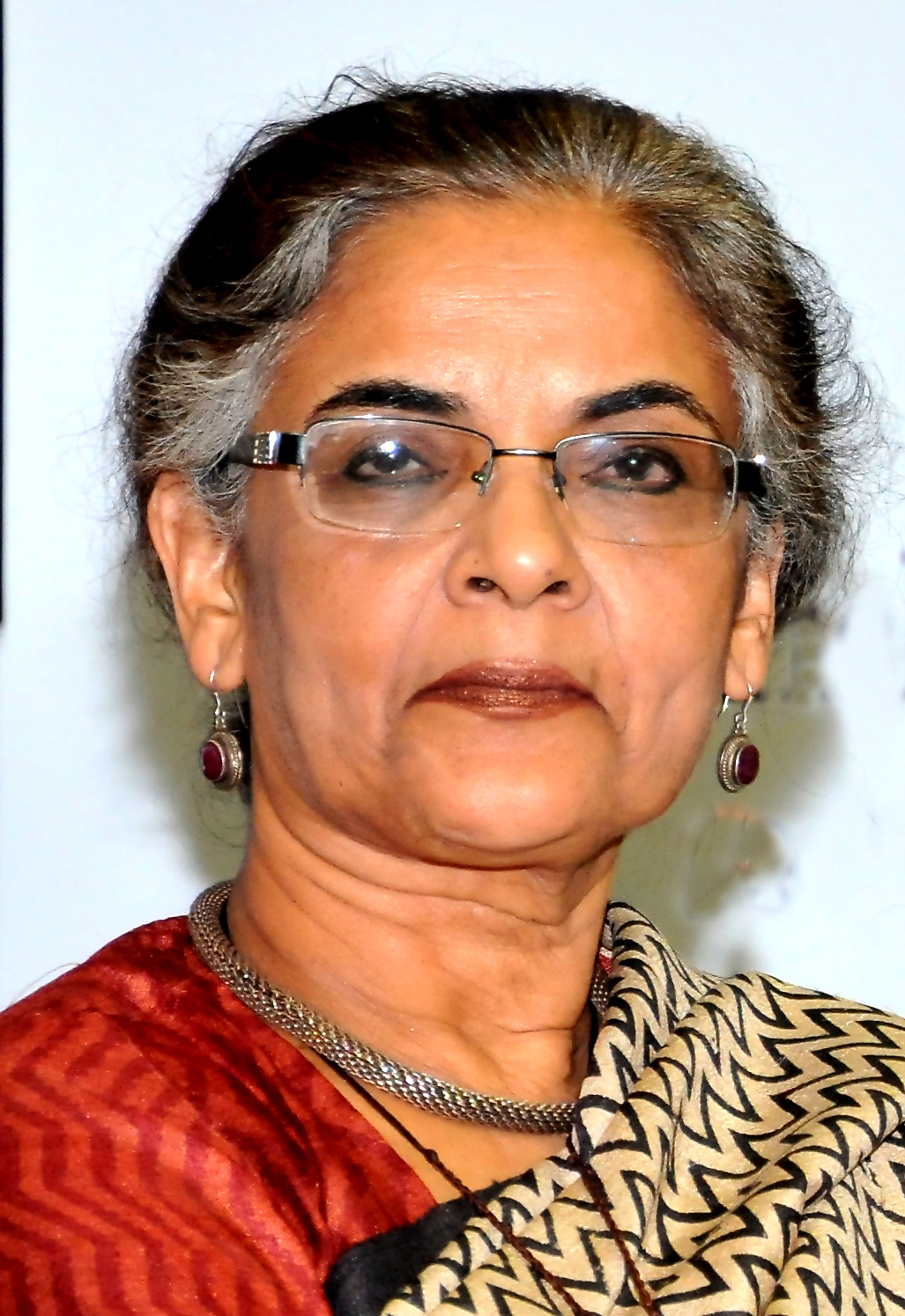
views
Zoya Hasan is Professor Emerita, Jawaharlal Nehru University. She has worked extensively on the socio-economic status of Muslim women. Her books on the subject include: Unequal Citizens: A Study of Muslim Women in India, (co-authored with Ritu Menon) and Educating Muslim Girls: Comparison of Five Indian Cities (co-authored with Ritu Menon). She speaks to Eram Agha on the significance of the Shaheen Bagh sit-in which lasted over 100 days in the national capital.
1) There are stereotypes attached to Muslim women (oppressed and wrapped in hijab) that have been difficult to dislodge. Do you think Shaheen Bagh protests have changed the way the world will look at Indian Muslim women? If yes, then how?
The Citizenship Amendment Act (CAA) provoked massive protests across the country, by far the biggest public protests since Independence. India hasn’t seen such a sustained civil society mobilisation dominated by young women. Nor have we seen this scale of women’s mobilisation around non-gender issues and in complete defiance of state and police violence across the country. It’s striking that women were out on the streets for a cause that was not women-specific, not about sexual harassment or domestic violence. The active participation of Muslim women in the anti-CAA protests was the defining feature of this movement. It shattered many stereotypes about Muslim women. It put paid to the pervasive belief that the average Indian Muslim woman is an uneducated and burqa-clad figure who has no voice and is suffering under patriarchal oppression. Muslim women were in the vanguard of the anti-CAA protests.They were the life and soul of resistance against CAA. Their support has sustained protests in multiple locations in dozens of cities and metropolises. No one would have expected such significant and sustained participation of Muslim women who led from the front.
2) What is going to be the significance of the protests by Indian Muslim women at Shaheen Bagh and elsewhere across India? The protest sites multiplied over the period of time, how do you see the movement built from one place to another on the resolve of Muslim women?
These protests are momentous because of the huge participation of Muslim women. The protests demonstrate a new vocabulary and grammar of politics as a form of civil disobedience. Protest vocabulary was being devised spontaneously without the presence of big leaders and political parties. Yet, they were not non-political protests. The remarkable thing is that Muslim women were fashioning and responding to challenges as they went along through their struggles.
3) Shah Bano was the lone Muslim woman fighting for her rights but was let down by the government and AIMPLB. She was denied what was guaranteed to her by Qur'an. Today there are many Muslim women under the umbrella identity of “Women of Shaheen Bagh”. The contexts of the two are different but what does it say about the visibility of Indian Muslim women on the streets fighting for their rights, from Bano to Shaheen?
The anti-CAA protests are quite different from Shah Bano and triple talaq campaigns. For years Muslim women’s groups have been trapped by personal law debate to the exclusion of more pressing issues. The focus on personal laws issues obscured the social reality which is more complex than what personal laws indicate. What is remarkable about the high visibility of Muslim voices in the protests and rallies of the last few months is that they have eschewed community-specific positions. For the first time, Muslim women were not on the streets for the preservation of Muslim personal law. For the first time, they are not being led by clerics. In fact, in some cases, they have come out in defiance of clerical advice as in Deoband. They rejected the advice of the Vice-Chancellor of Darul Uloom Deoband who had advised them to give up their protest for the time being during a meeting with the district administration. Clerics and community leaders were kept out. That’s no small achievement. This enabled a discussion of wider issues which has contributed to a broadening of the notion of rights.

4) Before this, there was a struggle to ban triple talaq. The movement was started by a group of Muslim women. The Muslim Women (Protection of Rights on Marriage) Act, 2019 became law on 31 July 2019, replacing the earlier ordinance. But since it criminalises triple talaq there was a section of women agitating against it. How do you see the divisions among the women?
There are no divisions among women on the CAA issue. Far from divisions, there was a great unity of purpose. This protest was against the new citizenship laws which openly discriminates against one community and undermines the secular foundations of our Constitution. What is most fascinating about the anti-CAA struggle is the way in which symbols and slogans of secularism and constitutionalism have been reclaimed and reasserted by ordinary women. It is clear that these ideas have more traction among large sections of our people than we might have imagined. Muslim women’s resistance was forceful in bringing renewed attention to the Constitution simultaneously marked by an absence of religious and sectarian symbols.
5) How important is this visibility of Indian Muslim women for development policies, gender parity at home, and work?
Muslim women have made few tangible gains from more than seven decades of development. They are conspicuous by their absence in the world of politics, professions, bureaucracy, universities and public and private sectors. They rarely figure in the debates on empowerment, poverty, education or health, nor has their vulnerability aroused much concern. They are heavily over-represented among the poor, they lack mobility and employment. Yet, they have remained invisible in public policy and political processes. However, the high visibility of Muslim women in the recent movement should have a positive impact on their status and should contribute to greater concern being given to their education, livelihood and security concerns and also greater gender parity at home.
6) Do you see Shaheen Bagh as a movement restricted to a particular class? Or it brought Muslim women from across the class spectrum together? Please elaborate on your observation.
Shaheen Bagh and various protests across the country have drawn women from all ages, classes and social backgrounds. It is this multiplicity which gave strength to this remarkable resistance. What brings women from different backgrounds together is the experience and apprehension of discrimination.
7) As Muslim women have found their voice, even if with broken sentences, where do you see the role of liberal activists speaking for them in the past?
This protest has shown that Muslim women can speak for themselves and for others as well. If there’s one thing that interviews and comments on the street have revealed, it is that ordinary women are speaking with a profound sense of social responsibility, clarity and resoluteness. They have dared to speak despite the threat of facing vilification, physical attack or boycotts for disagreeing with the dominant narrative. Importantly, this time women weren’t responding to the call of male leaders. It was clear that they do not need saviours. Instead, they were the saviours of the idea of India, of the Constitution and of equal citizenship. Posters, creative songs, poetry, slogans, art and graffiti drive home the point unequivocally- we will not allow any dilution of secularism and equal rights enshrined in the Constitution.
8) After attaining this stature of national recognition, what are going to be the real battles for Muslim women of Shaheen Bagh in times to come - private and public?
Shaheen Bagh has opened a new world to women, one where they are seen and heard and taken seriously. It has given Muslim women a voice and agency that was previously lacking. For many women, these protests are therefore life-changing and empowering particularly for those from weaker sections. It would change the lives of the women of Shaheen Bagh and of Muslim women more generally, and hopefully, there is no going back to the four walls of the home.
9) How do you look at the unfolding of communal politics in India and the Indian Muslim women's struggle for rights and identity?
The protests ended in unexpected circumstances caused by the national lockdown and the fear of the coronavirus. No matter how the protests ended, it indicated clearly that Muslim women have come of age. Regardless of the outcomes, this movement was successful in mainstreaming a political critique of discrimination and in buttressing secularism. This was possibly one of the most important movements for equal citizenship in Independent India - a broad-based movement whose core was largely women. None of us had foreseen this and how these events would unfold after the passage of this law. The brilliance of this protest is that it took everyone by surprise.
















Comments
0 comment